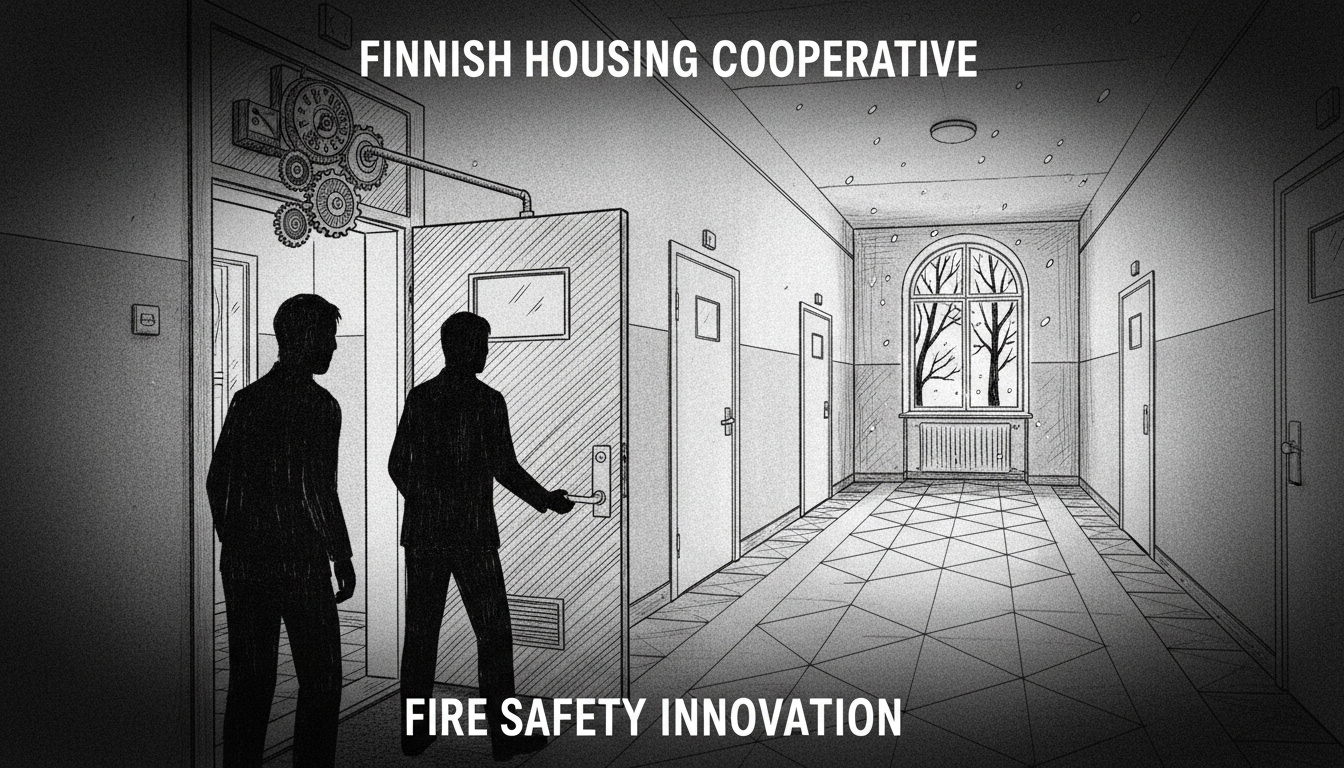A housing cooperative in Jyväskylä, Finland has taken extraordinary fire safety measures that could serve as a model for older apartment buildings nationwide. The Aatoksenkatu 6 building in the Nisula neighborhood has installed specialized pressure-balancing door locks in all apartments, addressing a critical safety issue that has caused fatalities in residential fires.
Raimo Peltovuori, the housing cooperative board chairman and former police officer, explained the motivation behind the upgrades. During his police career, he witnessed multiple fire deaths where residents perished trying to escape through their apartment doors. The problem occurred when fire created pressure differences that made interior doors impossible to open, trapping people inside.
The solution came in the form of Pisla Paloturva safety devices installed in all double-leaf exterior door systems. These specialized locks contain valves that balance air pressure, allowing residents to open doors even during fires. While replacing all exterior doors would have been significantly more expensive, this targeted solution provided effective protection at a fraction of the cost.
Finland faces particular fire safety challenges with its aging housing stock. Many apartment buildings constructed during the 1960s-1980s renovation boom now require safety upgrades. The country's long, dark winters and extensive use of electrical heating create additional fire risks that make preventive measures especially important.
The safety improvements yielded unexpected benefits beyond fire protection. One resident who previously kept their interior door open due to safety concerns now closes it regularly, reducing noise transmission between apartments. This demonstrates how safety investments can directly improve living quality.
The cooperative maintains an evolving rescue plan updated as needed, with new additions communicated during shareholder meetings. Since 2011, when they first requested a fire inspection from rescue authorities, the building has systematically addressed identified deficiencies and maintained clear escape routes free of storage items.
Residents have been instructed to equip each apartment with fire blankets, particularly useful for kitchen fires involving electrical appliances, oil, or grease. The housing cooperative also recommends installing the 112 emergency application on mobile phones.
Starting next year, Finnish housing cooperatives will assume responsibility for smoke detector acquisition, installation, and maintenance nationwide. Aatoksenkatu 6 proactively renewed and standardized all apartment smoke detectors last year, implementing a synchronized battery replacement schedule for easier maintenance.
The building underwent major renovations in 2021 that included accessibility upgrades to exterior doors and elevators. During these improvements, an automatic door pump was installed in the ground-floor fire door to ensure automatic closure during emergencies.
Fire safety experts emphasize the importance of early fire intervention. According to rescue authorities, initial firefighting attempts occur in approximately one-third of building fires. Proper equipment and training can contain blazes before they escalate into major emergencies.
For home fire protection, specialists recommend both fire blankets and hand extinguishers. Powder extinguishers offer versatility for various fire types but can damage electronics indoors. Liquid or foam extinguishers provide better alternatives for indoor electrical fires while being less messy.
The Jyväskylä cooperative's approach demonstrates how proactive safety measures can address multiple concerns simultaneously. Residents report increased satisfaction with both safety and living comfort, showing that security investments pay dividends beyond emergency preparedness.
As Finland's building stock continues aging, such targeted safety upgrades will become increasingly important for preventing tragedies while maintaining housing quality. The success at Aatoksenkatu 6 offers a replicable model for similar buildings throughout the Nordic region.

